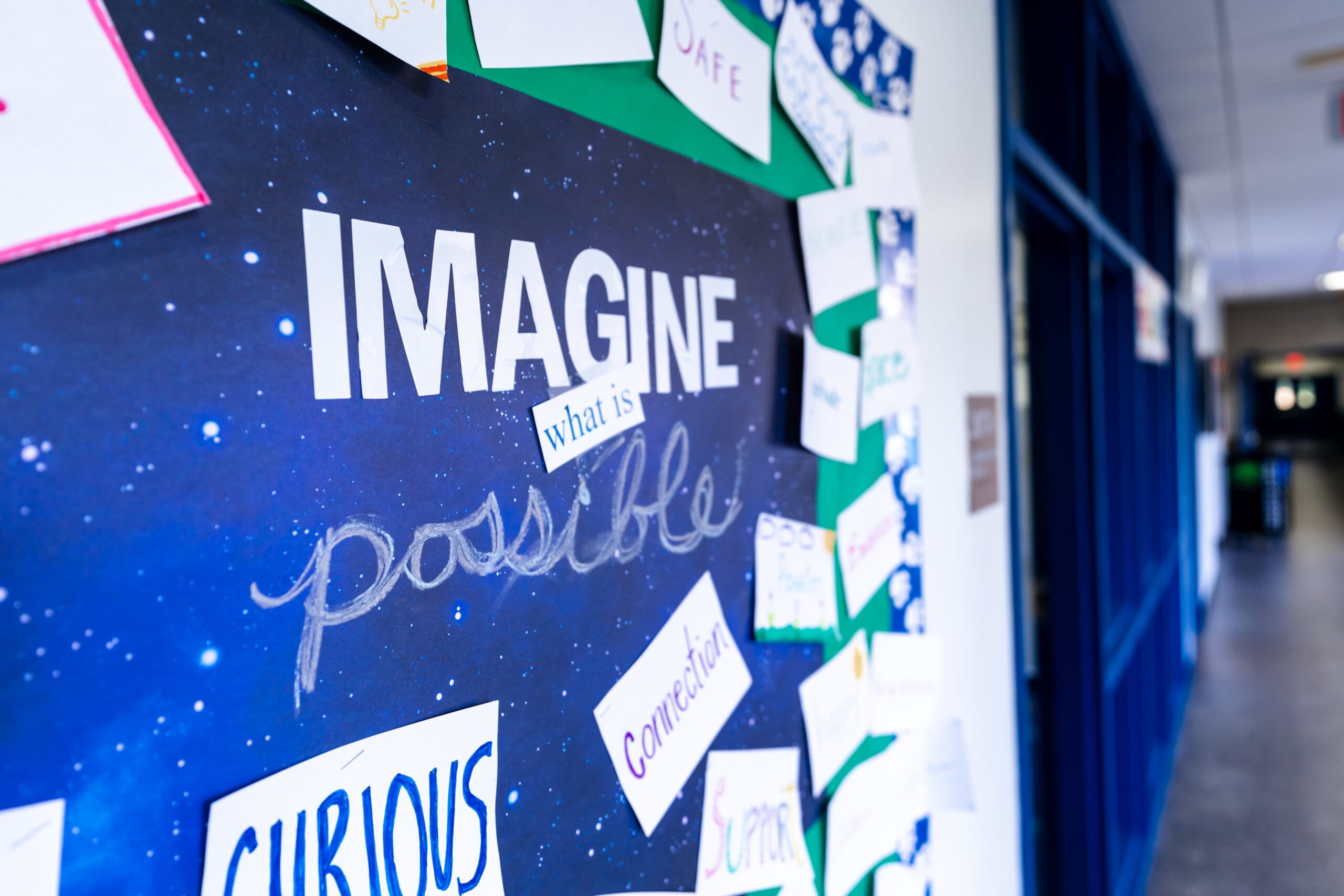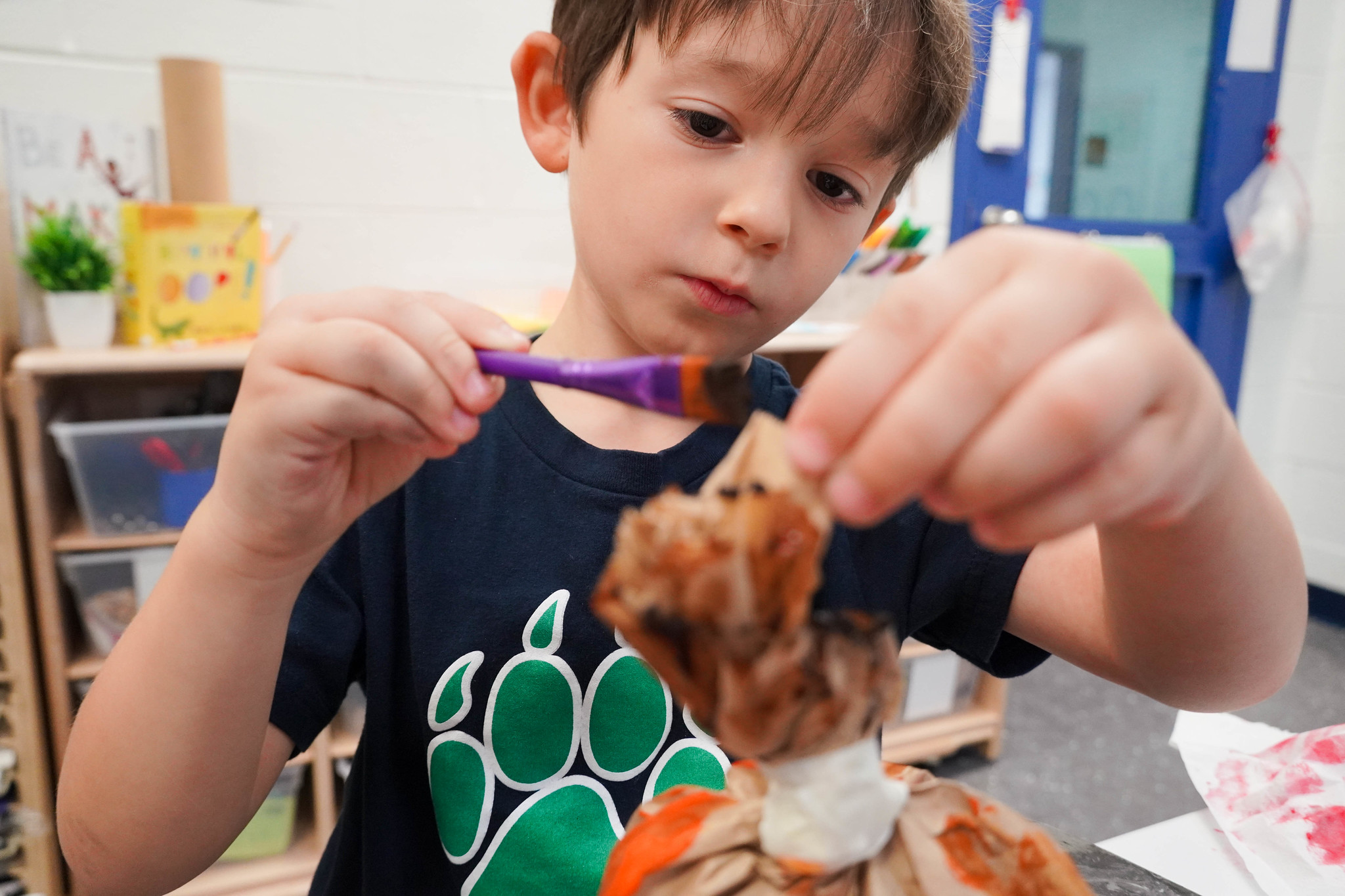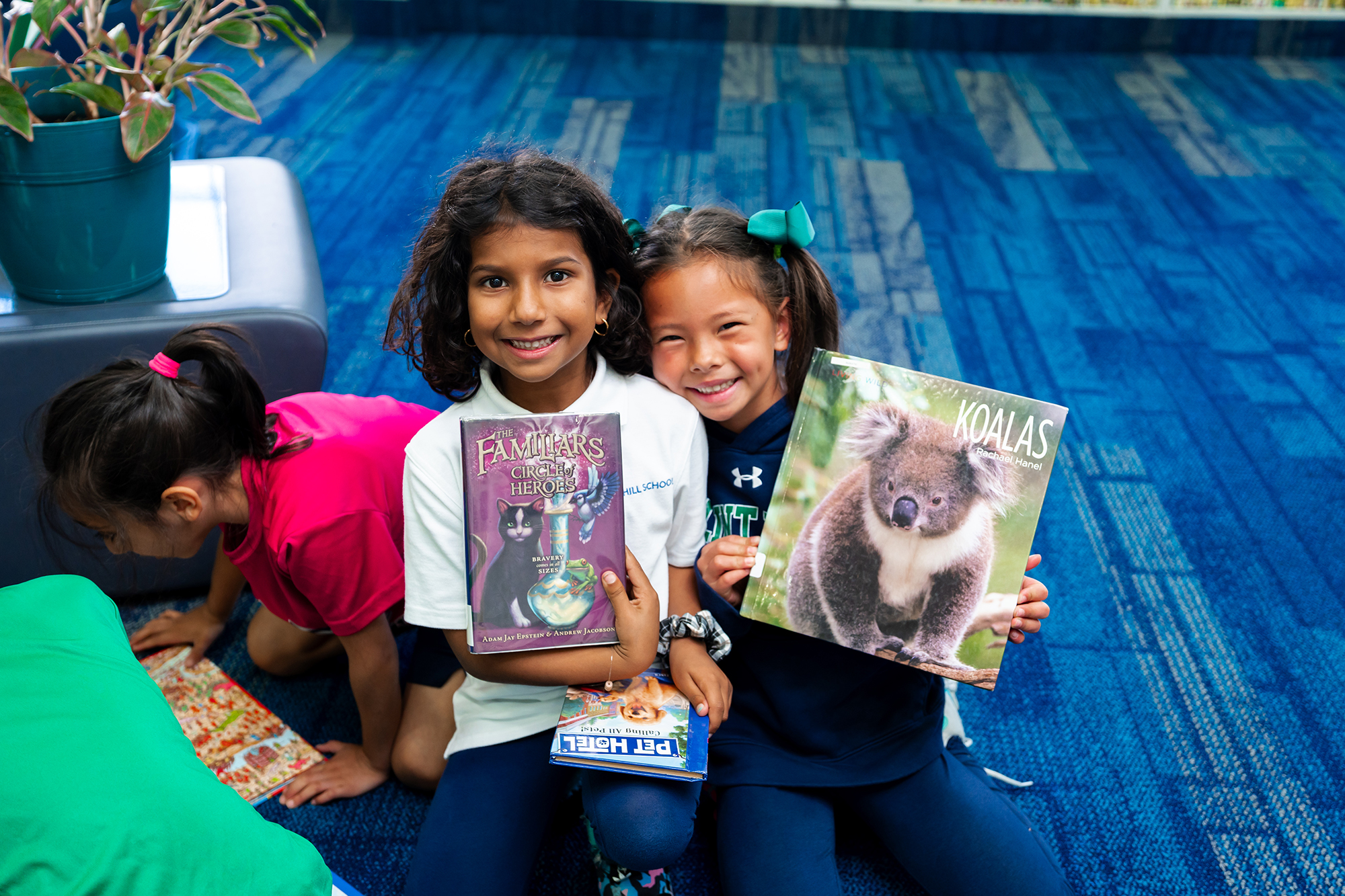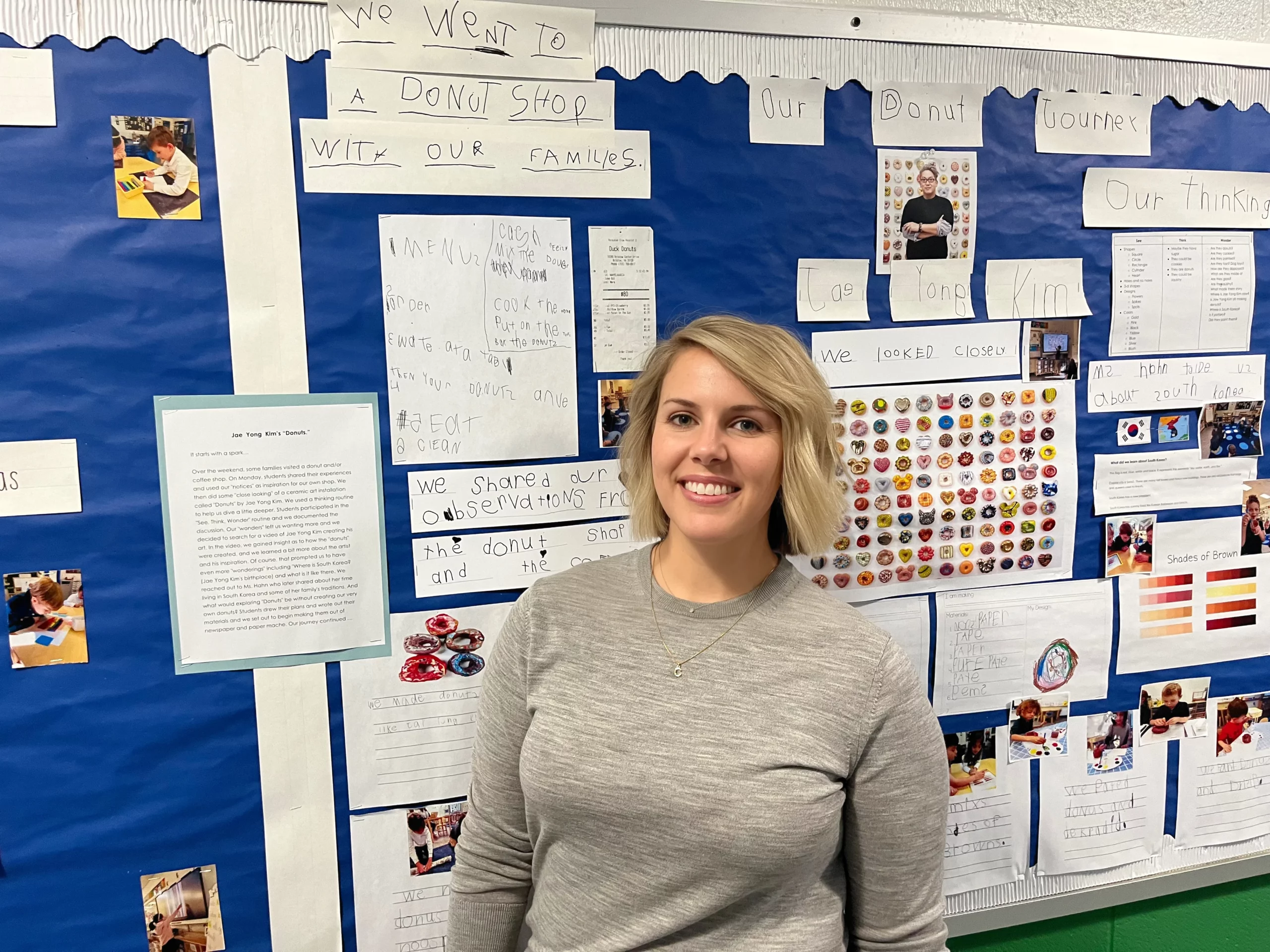LEARN MORE ABOUT FLINT HILL
HUSKY HIGHLIGHTS
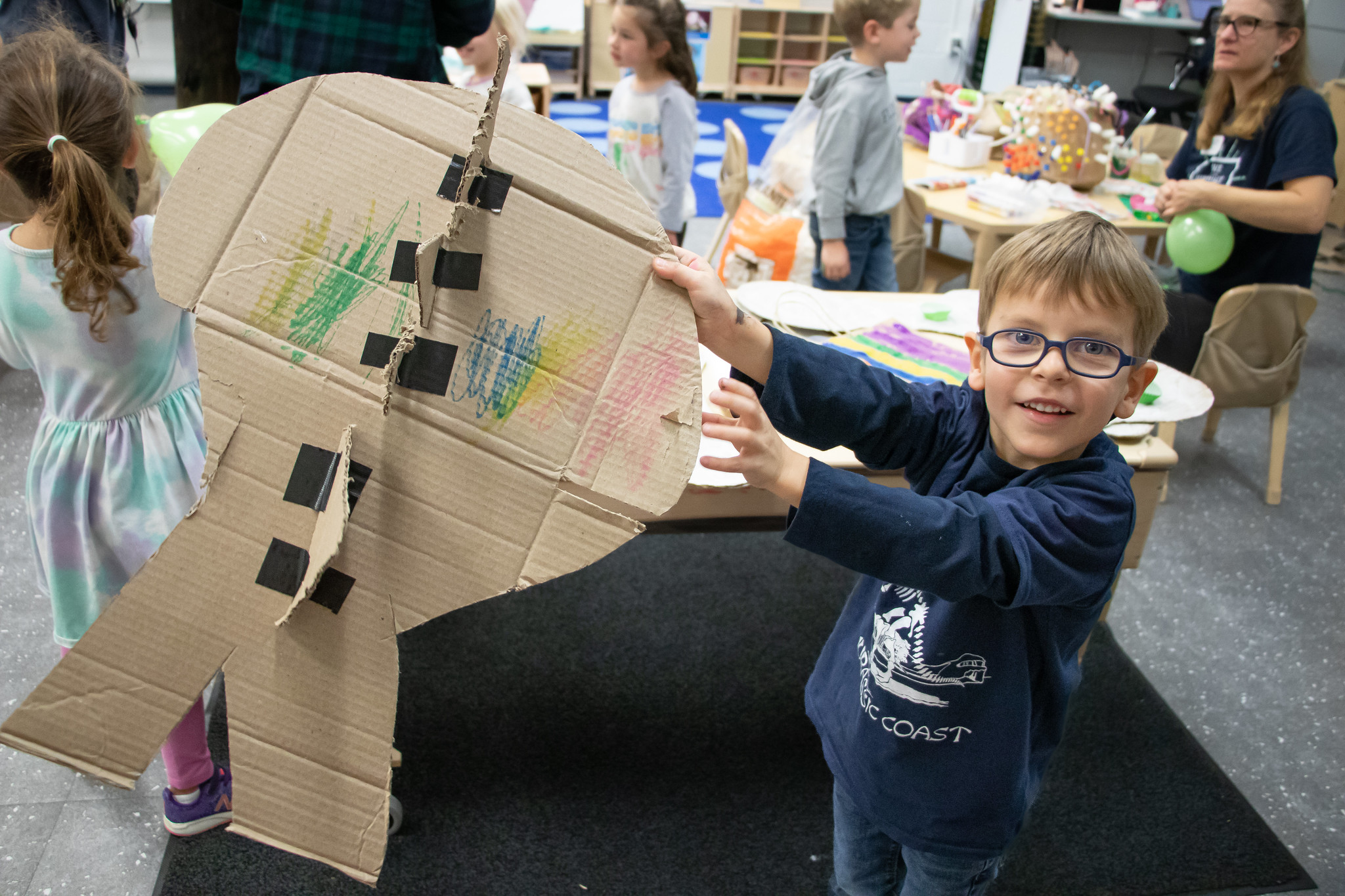
September 13, 2023
Written by Flint Hill Admission Team
A Look at Lower School Innovation
What do we mean when we say we have an "innovation" program? Get a glimpse into the features of our Lower School program with Grades JK-6 Innovation Department Chair Joey Starnes.
Watch the video or read the transcript below.
TRANSCRIPT: Hi, I'm Joey Starnes. I'm the JK-6 Innovation Department chair. I'm going to tell you a little bit about our program and explain the features and the way we progress throughout our program, from junior kindergarten through sixth grade.
Our program involves our hands, our hearts and our brains. We use our bodies and our minds all in to work on our projects in our Innovation Program.
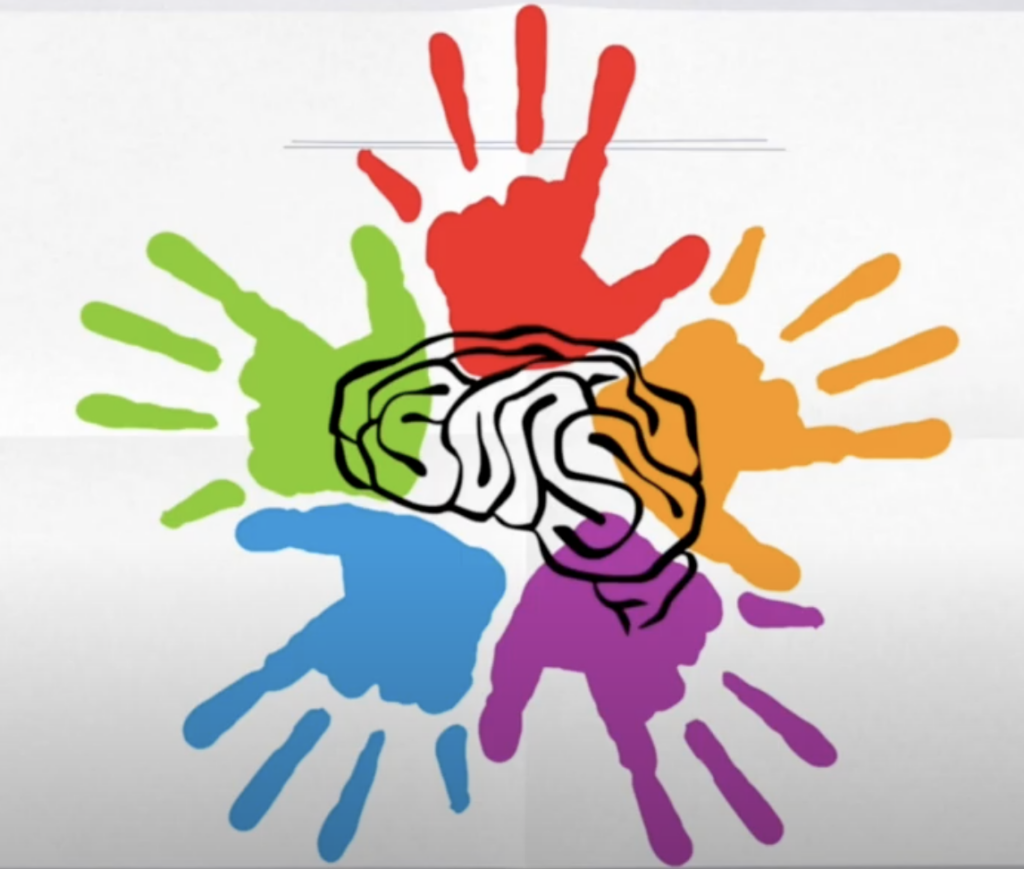
I love this merging of the brain and the hands to show you that we make things, we think things, and that sometimes the thinking is even more important than the making in the work that we do.
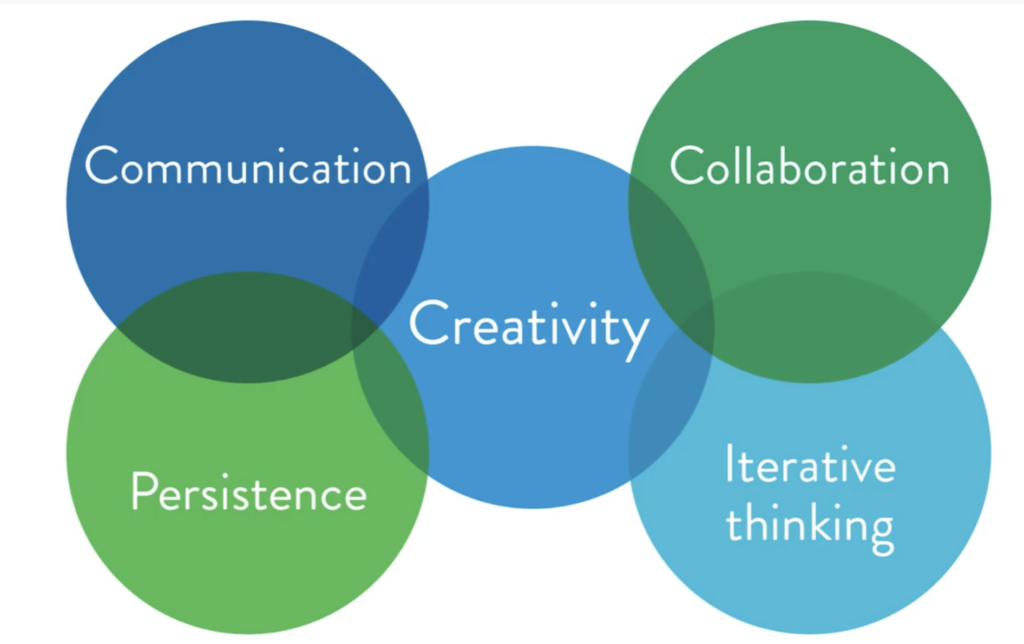
We bring together all of these skills in our work in innovation. Creativity is at the center and surrounded by communication, collaboration, persistence and iterative thinking. Something that our kids do all the time is reprocess what they've done: Can I make it better, how might I improve this, what can I do differently on this or the next project? We are always applying our thinking to what we're doing and then moving forward into something else. The work is not necessarily about a specific project, but about the kind of thinkers and learners and doers that we are becoming through the work.
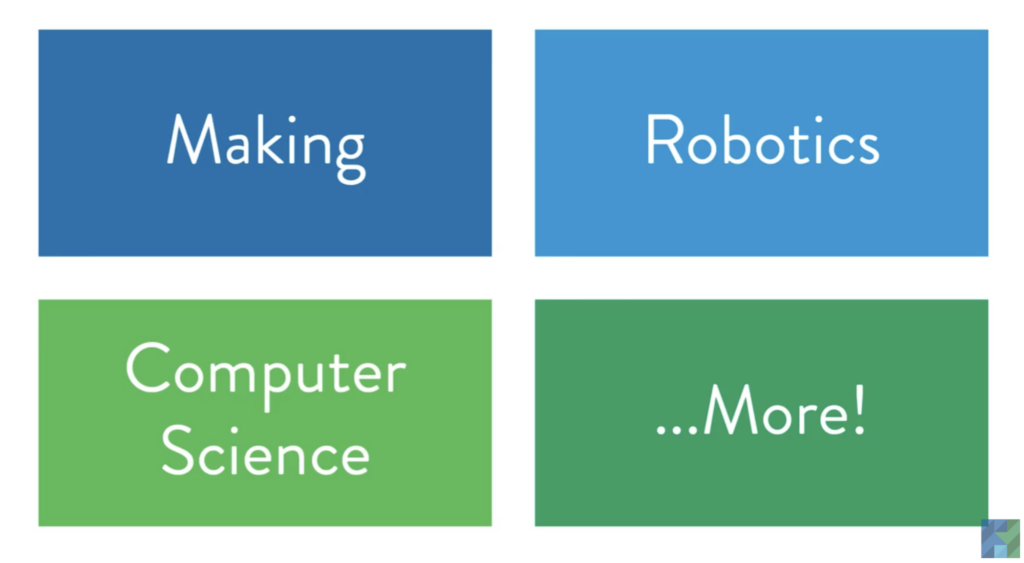
Innovation in JK through sixth grade incorporates the aspects you see here making, which means our 2D and 3D design, where our students are designing two-dimensional work to cut on our vinyl cutter, our laser cutter and our CNC machine. They're using 3D design to create things to print on our several 3D printers. They're also learning about robotics through both hands-on and application-based robotics work, starting with our youngest students with our bee bots and moving all the way up to getting them ready to be on our competition robotics team, starting in seventh grade.
Our students also learn computer science. They are lucky enough to have computer science as a special class every week with Ms. Henry, and she teaches, starting in junior kindergarten, the basics of computer science. I will go into that in more detail in a bit.
Also, students are learning the whole concept of innovative thinking through design thinking, through design challenges, and through collaborative projects that they come up with in their own classes to explore through our innovation program.
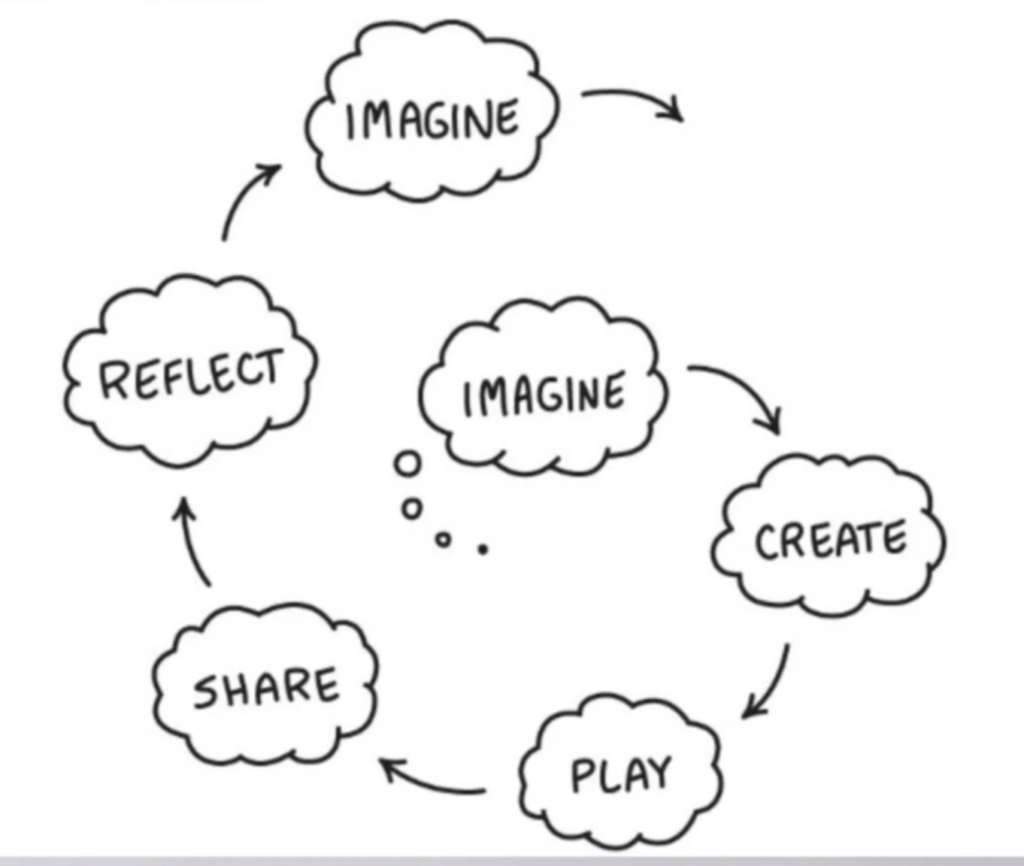
We love this image because it shows the importance of imagination. We start and end this graphic with “imagine.” You have to imagine something, and then you try to make it, and then you play around with it. You play with it because we know that we learn through play. You share it: you share it with your family on Seesaw, you share it with your classmates, you share it in our Lower School morning meeting, you share it with the world! And you reflect on how it went, and then you imagine all over again, maybe improvements to the same project or maybe a brand new project.
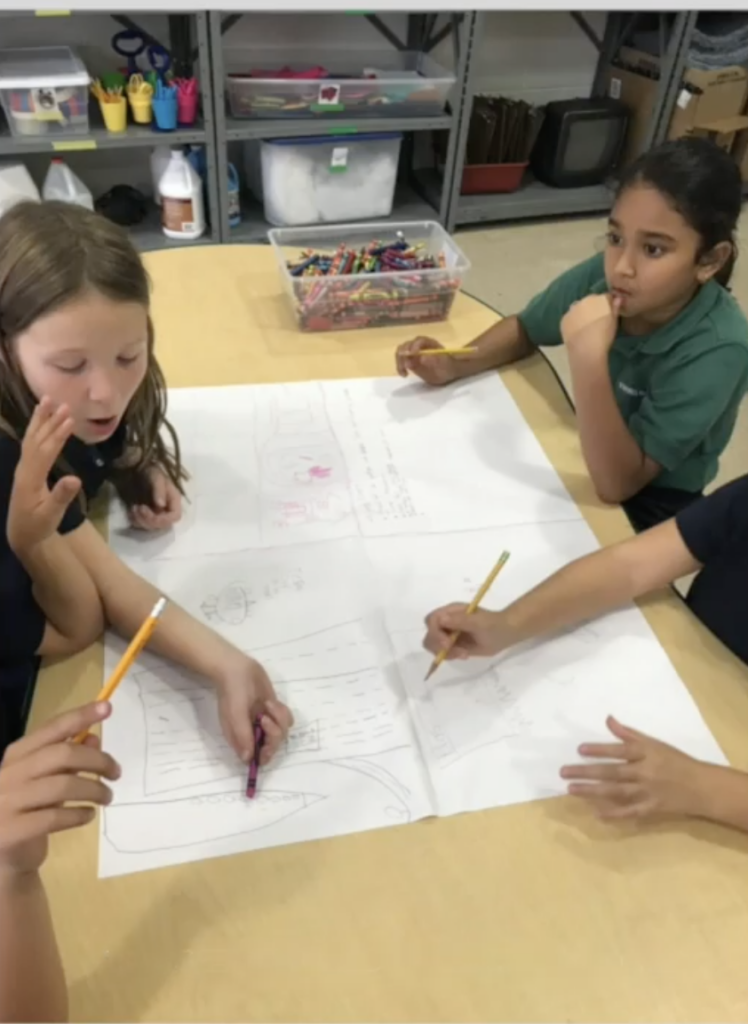
I love this picture because you see our students working together to collaborate on their idea. You see some students plan in writing, some plan through sketching and drawing, but they're all going to come away with it with a plan for their project.
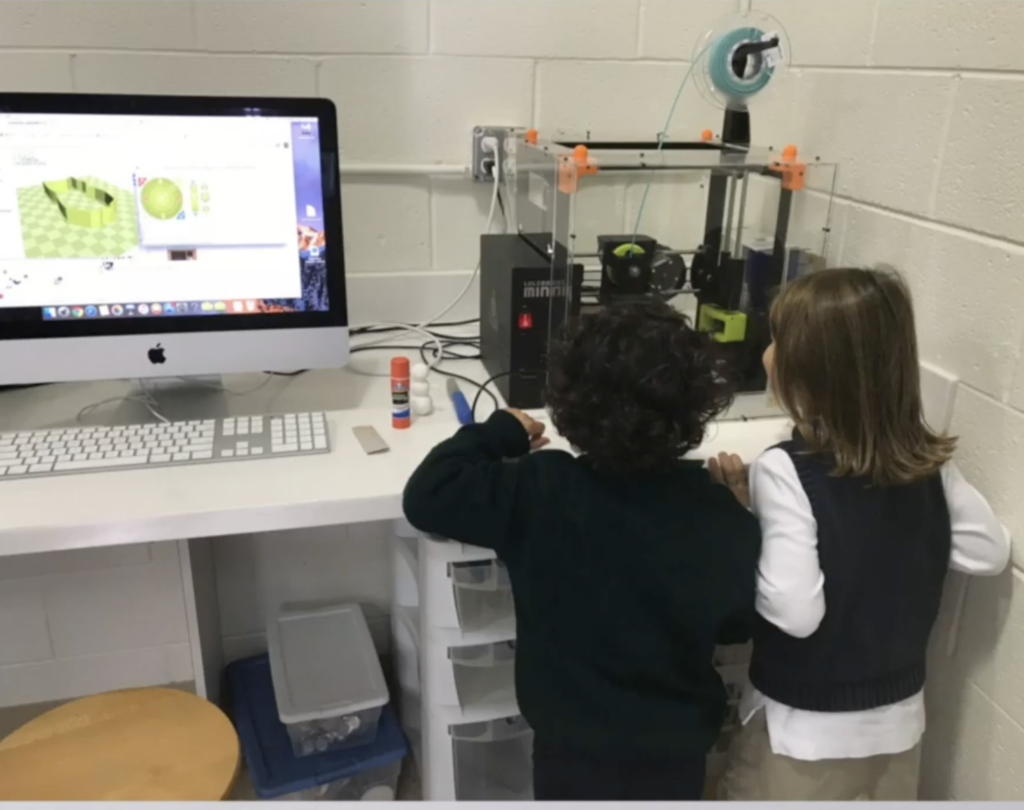
Here, you see some of our younger students watching the 3D printer. They designed cookie cutters, and they were watching their print come to life. It’s pretty great to see our youngest students engaging in this sort of learning.
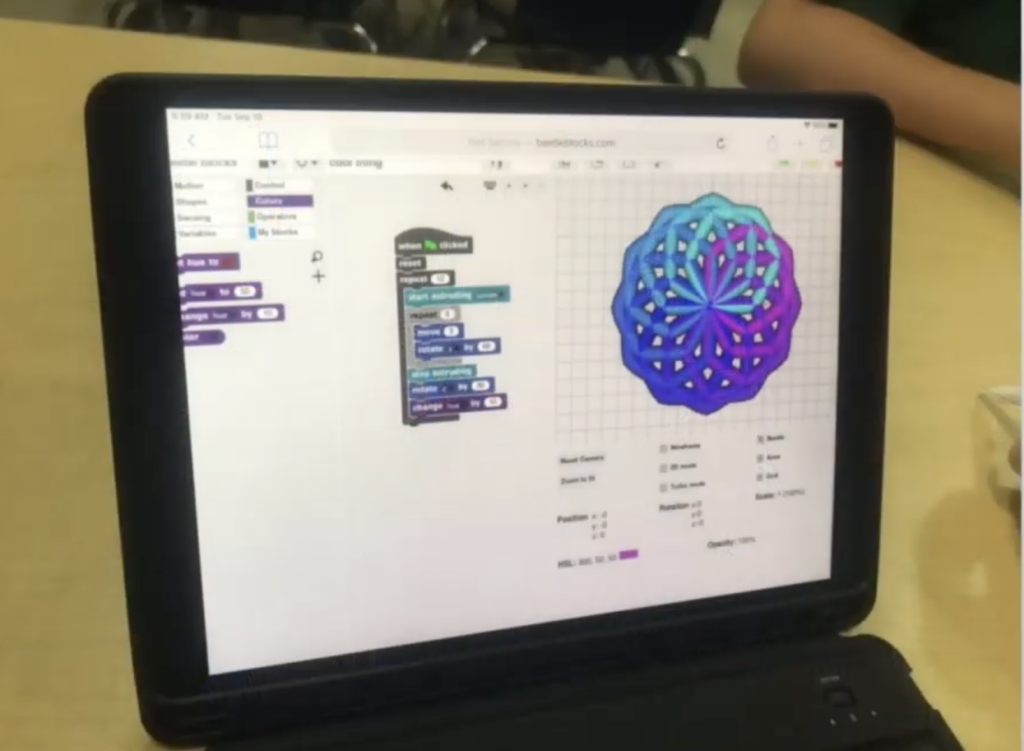
This is an example of a program that our fifth and sixth graders use called Beetle Blocks. It allows them to code through patterns, and then we can take this design and laser cut it or use it on the CNC machine or even 3D print it. So this is an integrated concept right here.
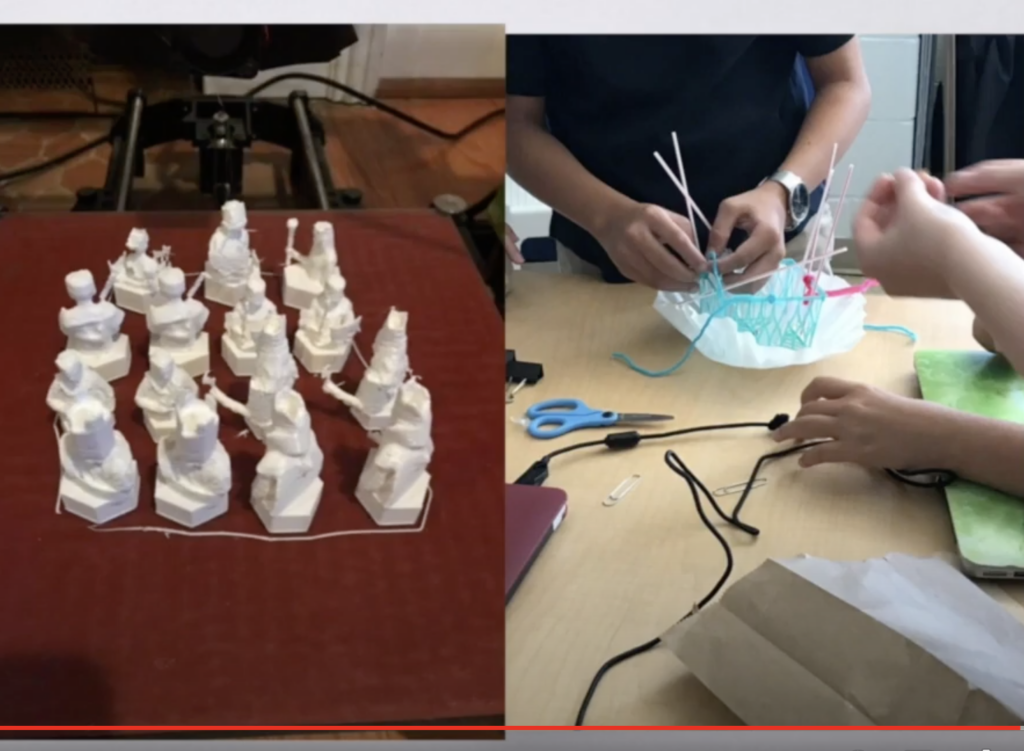
This is also something our older students have done. They took photos of themselves with a 360-degree camera and then 3D printed their likenesses onto a chess piece. You can see on the right they are completing a design challenge, where they are given a bag of materials and a challenge, and they have a limited amount of time to complete that challenge together.
A little bit of information about our computer science program. We teach computer science by teaching them the vocabulary of coding. We use plugged and unplugged activities so we can code without ever touching the iPad, by using verbal directions or written directions and maybe our bodies to say: show me how to move to the front of the room, and they have to explain, “Walk six steps! Oh, okay.” We also teach kids how to debug their code and reflect on how to make it better.
*Note: These photos were taken in 2019.
LEARN MORE ABOUT FLINT HILL
Fill out the form to receive updates from our team.
RECOMMENDED FOR YOU
A VAIS committee completed its 10-Year Accreditation Visit in April 2024. The committee reported its immediate findings in this short presentation to faculty and staff.
Kindergarteners embarked on a project that nurtured their artistic abilities and expanded their horizons to encompass cultural and linguistic dimensions.
Running out of books for your young reader? Lower School Librarian Michelle Plaut shares eight book recommendations for children in Grades JK-3 (ages 4-8).
One kindergarten class designed a multifaceted learning experience spanning social studies, art, engineering, reading, and more — and it all revolved around donuts!



